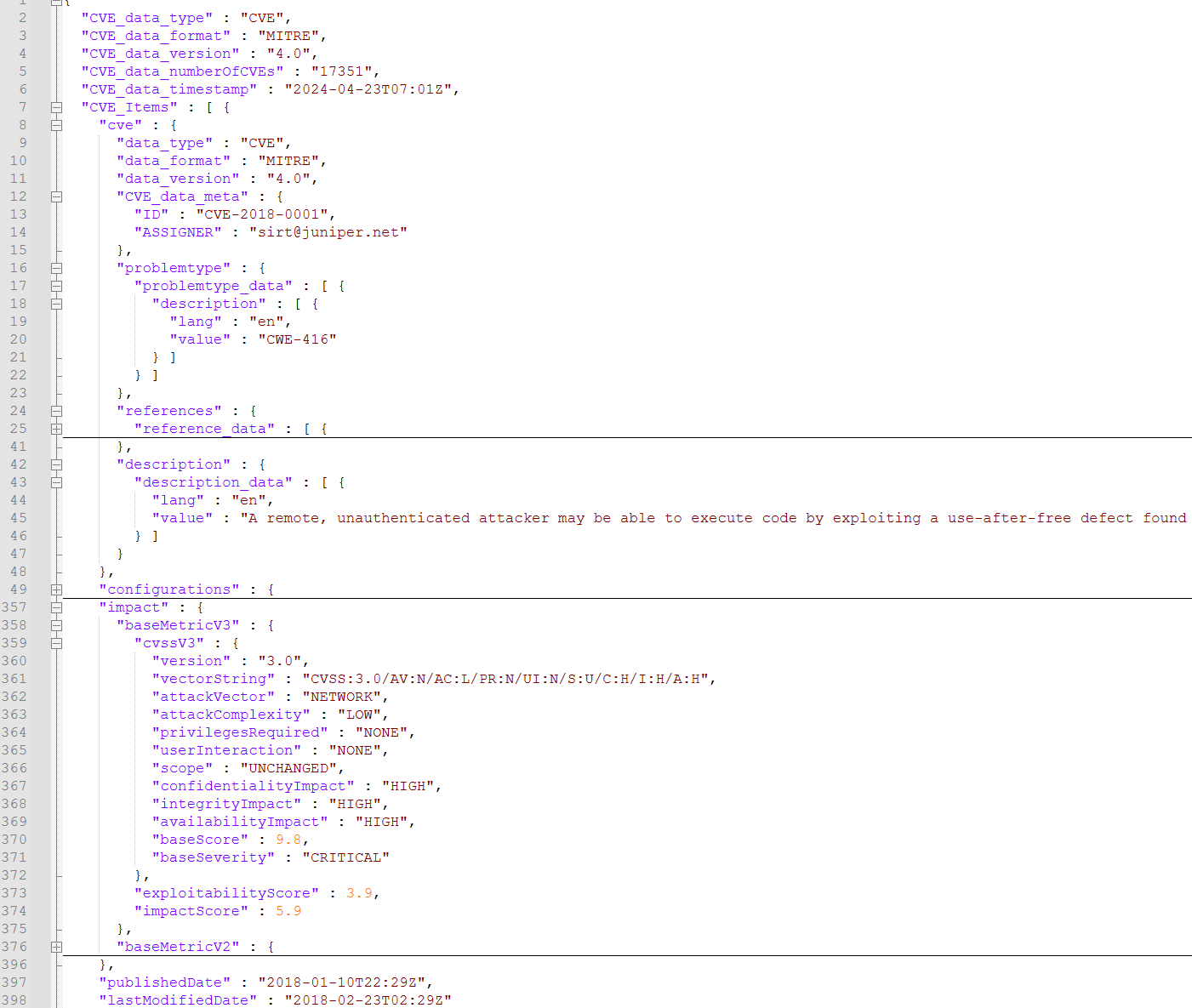Transforming Computer Security and Public Trust Through the Exploration of Fine-Tuning Large Language Models
2406.00628

0
0

Abstract
Large language models (LLMs) have revolutionized how we interact with machines. However, this technological advancement has been paralleled by the emergence of Mallas, malicious services operating underground that exploit LLMs for nefarious purposes. Such services create malware, phishing attacks, and deceptive websites, escalating the cyber security threats landscape. This paper delves into the proliferation of Mallas by examining the use of various pre-trained language models and their efficiency and vulnerabilities when misused. Building on a dataset from the Common Vulnerabilities and Exposures (CVE) program, it explores fine-tuning methodologies to generate code and explanatory text related to identified vulnerabilities. This research aims to shed light on the operational strategies and exploitation techniques of Mallas, leading to the development of more secure and trustworthy AI applications. The paper concludes by emphasizing the need for further research, enhanced safeguards, and ethical guidelines to mitigate the risks associated with the malicious application of LLMs.
Create account to get full access
Overview
- This paper explores using large language models (LLMs) to enhance computer security and public trust in technology
- The researchers investigate fine-tuning LLMs for various cybersecurity tasks, such as vulnerability detection and understanding cybercrime
- The goal is to leverage the powerful capabilities of LLMs to improve security, safety, and public perception of computer systems
Plain English Explanation
Computers and technology have become essential parts of our lives, but they also come with security risks. Hackers can break into systems, steal data, or cause damage. This paper looks at using a special type of artificial intelligence called large language models (LLMs) to help improve computer security and the public's trust in technology.
LLMs are AI systems that are trained on huge amounts of text data, allowing them to understand and generate human-like language. The researchers in this paper explored ways to "fine-tune" or adapt these powerful LLMs to specific cybersecurity tasks. For example, they trained LLMs to detect software vulnerabilities that hackers could exploit, or to better understand the patterns and motivations of cybercriminals.
By leveraging the impressive abilities of LLMs, the researchers hope to make computer systems more secure and trustworthy. This could help protect people's personal information, critical infrastructure, and overall confidence in technology. The goal is to use advanced AI to transform the fields of computer security and public perception in a positive way.
Technical Explanation
The paper begins by providing background on the use of large language models (LLMs) in cybersecurity and the potential of generative AI techniques to enhance security capabilities. The authors then present several case studies where they fine-tuned LLMs for specific cybersecurity tasks.
In one study, the researchers fine-tuned an LLM to detect software vulnerabilities by training it on code snippets labeled as vulnerable or non-vulnerable. The fine-tuned model was able to accurately identify vulnerabilities in new code, outperforming traditional vulnerability detection methods.
Another study explored using fine-tuned LLMs to better understand the nature of cybercrime. The researchers trained an LLM on cybercrime data, allowing it to generate text that mimics the language and behavioral patterns of cybercriminals. This provides insights into their motivations and tactics, which can inform more effective security strategies.
The paper also examines the potential misuse of LLMs and discusses the importance of responsible development and deployment of these powerful technologies.
Critical Analysis
The paper presents a compelling vision for how large language models can be leveraged to enhance computer security and public trust. The researchers have demonstrated the potential of fine-tuning LLMs for specific cybersecurity tasks, showing promising results in areas like vulnerability detection and understanding cybercriminal behavior.
However, the paper also acknowledges the potential risks and challenges associated with these technologies. The researchers rightly point out the need for careful consideration of the "misuse potential" of LLMs, as these powerful systems could also be exploited by bad actors. Continued research and development in this area must be undertaken with a strong focus on ethics, safety, and security.
Additionally, the paper does not delve deeply into the limitations of the presented approaches or areas for further research. It would be valuable to see more discussion of the constraints, caveats, and future directions that could build upon this work.
Overall, this paper offers an intriguing look at the intersection of large language models and cybersecurity. By pushing the boundaries of what is possible with advanced AI, the researchers are working to transform the way we approach computer security and rebuild public trust in technology.
Conclusion
This paper explores the exciting potential of using large language models (LLMs) to enhance computer security and public trust in technology. By fine-tuning these powerful AI systems for specific cybersecurity tasks, the researchers have demonstrated promising results in areas like vulnerability detection and understanding cybercriminal behavior.
The implications of this work are significant. Leveraging LLMs could lead to more robust security measures, better protection of sensitive data, and a greater public confidence in the safety and reliability of computer systems. As technology continues to shape our daily lives, it is crucial that we find ways to make it more secure and trustworthy.
While the paper acknowledges the potential risks of these technologies, the overall vision presented is one of using advanced AI to transform the fields of computer security and public perception in a positive way. As the research in this area continues to evolve, it will be important to closely monitor the development and deployment of these systems to ensure they are used responsibly and for the benefit of society.
This summary was produced with help from an AI and may contain inaccuracies - check out the links to read the original source documents!
Related Papers

Large Language Models for Cyber Security: A Systematic Literature Review
HanXiang Xu, ShenAo Wang, NingKe Li, KaiLong Wang, YanJie Zhao, Kai Chen, Ting Yu, Yang Liu, HaoYu Wang

0
0
The rapid advancement of Large Language Models (LLMs) has opened up new opportunities for leveraging artificial intelligence in various domains, including cybersecurity. As the volume and sophistication of cyber threats continue to grow, there is an increasing need for intelligent systems that can automatically detect vulnerabilities, analyze malware, and respond to attacks. In this survey, we conduct a comprehensive review of the literature on the application of LLMs in cybersecurity (LLM4Security). By comprehensively collecting over 30K relevant papers and systematically analyzing 127 papers from top security and software engineering venues, we aim to provide a holistic view of how LLMs are being used to solve diverse problems across the cybersecurity domain. Through our analysis, we identify several key findings. First, we observe that LLMs are being applied to a wide range of cybersecurity tasks, including vulnerability detection, malware analysis, network intrusion detection, and phishing detection. Second, we find that the datasets used for training and evaluating LLMs in these tasks are often limited in size and diversity, highlighting the need for more comprehensive and representative datasets. Third, we identify several promising techniques for adapting LLMs to specific cybersecurity domains, such as fine-tuning, transfer learning, and domain-specific pre-training. Finally, we discuss the main challenges and opportunities for future research in LLM4Security, including the need for more interpretable and explainable models, the importance of addressing data privacy and security concerns, and the potential for leveraging LLMs for proactive defense and threat hunting. Overall, our survey provides a comprehensive overview of the current state-of-the-art in LLM4Security and identifies several promising directions for future research.
5/10/2024
🤖
Generative AI and Large Language Models for Cyber Security: All Insights You Need
Mohamed Amine Ferrag, Fatima Alwahedi, Ammar Battah, Bilel Cherif, Abdechakour Mechri, Norbert Tihanyi

0
0
This paper provides a comprehensive review of the future of cybersecurity through Generative AI and Large Language Models (LLMs). We explore LLM applications across various domains, including hardware design security, intrusion detection, software engineering, design verification, cyber threat intelligence, malware detection, and phishing detection. We present an overview of LLM evolution and its current state, focusing on advancements in models such as GPT-4, GPT-3.5, Mixtral-8x7B, BERT, Falcon2, and LLaMA. Our analysis extends to LLM vulnerabilities, such as prompt injection, insecure output handling, data poisoning, DDoS attacks, and adversarial instructions. We delve into mitigation strategies to protect these models, providing a comprehensive look at potential attack scenarios and prevention techniques. Furthermore, we evaluate the performance of 42 LLM models in cybersecurity knowledge and hardware security, highlighting their strengths and weaknesses. We thoroughly evaluate cybersecurity datasets for LLM training and testing, covering the lifecycle from data creation to usage and identifying gaps for future research. In addition, we review new strategies for leveraging LLMs, including techniques like Half-Quadratic Quantization (HQQ), Reinforcement Learning with Human Feedback (RLHF), Direct Preference Optimization (DPO), Quantized Low-Rank Adapters (QLoRA), and Retrieval-Augmented Generation (RAG). These insights aim to enhance real-time cybersecurity defenses and improve the sophistication of LLM applications in threat detection and response. Our paper provides a foundational understanding and strategic direction for integrating LLMs into future cybersecurity frameworks, emphasizing innovation and robust model deployment to safeguard against evolving cyber threats.
5/22/2024

Towards Better Understanding of Cybercrime: The Role of Fine-Tuned LLMs in Translation
Veronica Valeros, Anna v{S}irokova, Carlos Catania, Sebastian Garcia

0
0
Understanding cybercrime communications is paramount for cybersecurity defence. This often involves translating communications into English for processing, interpreting, and generating timely intelligence. The problem is that translation is hard. Human translation is slow, expensive, and scarce. Machine translation is inaccurate and biased. We propose using fine-tuned Large Language Models (LLM) to generate translations that can accurately capture the nuances of cybercrime language. We apply our technique to public chats from the NoName057(16) Russian-speaking hacktivist group. Our results show that our fine-tuned LLM model is better, faster, more accurate, and able to capture nuances of the language. Our method shows it is possible to achieve high-fidelity translations and significantly reduce costs by a factor ranging from 430 to 23,000 compared to a human translator.
4/3/2024
💬
Harnessing Large Language Models for Software Vulnerability Detection: A Comprehensive Benchmarking Study
Karl Tamberg, Hayretdin Bahsi

0
0
Despite various approaches being employed to detect vulnerabilities, the number of reported vulnerabilities shows an upward trend over the years. This suggests the problems are not caught before the code is released, which could be caused by many factors, like lack of awareness, limited efficacy of the existing vulnerability detection tools or the tools not being user-friendly. To help combat some issues with traditional vulnerability detection tools, we propose using large language models (LLMs) to assist in finding vulnerabilities in source code. LLMs have shown a remarkable ability to understand and generate code, underlining their potential in code-related tasks. The aim is to test multiple state-of-the-art LLMs and identify the best prompting strategies, allowing extraction of the best value from the LLMs. We provide an overview of the strengths and weaknesses of the LLM-based approach and compare the results to those of traditional static analysis tools. We find that LLMs can pinpoint many more issues than traditional static analysis tools, outperforming traditional tools in terms of recall and F1 scores. The results should benefit software developers and security analysts responsible for ensuring that the code is free of vulnerabilities.
5/27/2024